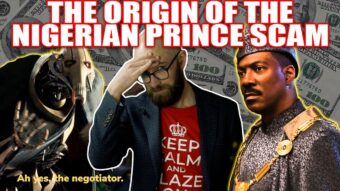
Fortunately for us, there’s a long trail of evidence regarding Tolkien’s thinking throughout the entire course of his composition. Per Tom Shippey in his book The Road to Middle-earth, the two things that separated Tolkien from other authors were “the very long gestation period of all his works, and his deep reluctance ever to discard a draft.” From the sound of it, Smaug the dragon was more than a bit autobiographical, albeit instead of hoarding dwarven gold and jewels, Tolkien hoarded moldy manuscripts from before the first World War even.
This thankfully allowed Tolkien’s son, Christopher, to posthumously publish such a veritable treasure trove in his twelve-book series The History of Middle-earth, which lays out in exacting detail the documentary history of his father’s poetry and prose about what would one day be called Middle-earth, going back decades before the Oxford don ever scribbled on a scrap of paper the iconic opening line “In a hole in the ground there lived a hobbit.” But given that Christopher’s History is several times the length of the Lord of the Rings and is padded by many manuscripts of minute variation from one another, far fewer fans have trudged through this journey from English pseudo-myths to high fantasy epic than have walked with the Fellowship from Bag End to Barad-dûr, so we thought we’d hop on the backs of eagles to give you a bird’s eye view of just what Tolkien was getting at.
Tolkien’s reason for wanting to write a mythology for the English people is that virtually nothing remains of the oral traditions told by the Anglo-Saxons prior to their migration from continental Europe to the isle of Britain starting in the fifth century. The causes for this are multifaceted, and include Christianization stamping out pagan traditions, Alfred the Great’s redirection of learning to Latin texts of non-native provenance, and the Normans’ supplantation of English with French for the upper class following Hastings, among other factors. Even Old English writings from after the migration, circa the seven kingdoms, are sparse.
Thus Tolkien lamented in a letter to Milton Waldman, “[English literature] was from early days grieved by the poverty of my beloved country; it had no stories of its own (bound up with its tongue and soil), not of the quality that I sought, and found (as an ingredient) in legends of other lands.”
There is Beowulf, a poem with which Tolkien worked extensively, personally producing a translation and a widely-read essay entitled The Monster and the Critics, but apart from that no other longform Anglo-Saxon narratives from either pre- or post-migration survive. And even if Beowulf the poem is Anglo-Saxon, Beowulf the protagonist is not, being a Geat warrior whose heroics take place in Denmark and Scandinavia – hardly a basis for an English mythology.
A similar problem plagues the legends of King Arthur. The literary figure of Arthur is of Welsh derivation, and if there’s any historical figure behind Arthur, it is of a Romano-Brit who partially succeeded in repelling the Anglo-Saxon invasion at the Battle of Badon Hill. So despite the popularity of Arthuriana in the English courts of the High Middle Ages, the ancestors of the English are the baddies of the stories. There’s a reason it’s called the Matter of Britain and not the Matter of England.
So if there was to be a mythology of England, Tolkien was just going to have to roll up his sleeves and write it himself. But he wasn’t about to just pull shit out of his arse. All of the earliest aspects of his Legenarium Tolkien got either from what little Old English writing remains or tales common to Germanic and Norse worlds which Tolkien could accredit to the Anglo-Saxons originally. The genesis of his mythology came about in 1913 when Tolkien happened across a line in Christ I, a collection of poems found in one of the only Old English codices, the Exeter Book. It read:
“Eálá Earendel engla beorhtast
Ofer middangeard monnum sended.”
(“Hail Earendel brightest of angels,
over Middle Earth to men sent.”)
To Tolkien, the fact that nothing was known about Earendel apart from this appearance in one of the few extant pieces of Anglo-Saxon poetry made him a perfect foundation on which to build an English Mythology. By 1914, Tolkien had surmised from philological comparison that the word Earendel had astronomical connotations which he guessed related to Venus, and as such wrote a poem about a celestial mariner navigating the night sky entitled “The Voyage of Éarendel the Evening Star.” Predating The Hobbit by twenty-three years, this was the first fiction he ever wrote set in Middle-earth, and despite the plastic nature of the narrative, Éarendel would remain a constant fixture, remaining more or less unchanged from Tolkien’s original conception down to his inclusion in The Two Towers, where Frodo calls out “Aiya Eärendil Elenion Ancalima!” “Hail Eärendil, Brightest of Stars,” an obvious callback to the lines in Christ I.
The appropriation of Eärendil from surviving Anglo-Saxon sources established the modus operandi by which Tolkien would construct his English mythology, originally to be titled The Book of Lost Tales. It centered around the story of Eärendil and the three “Great Tales” – Beren and Luthien, The Children of Hurin, and The Fall of Gondolin, all of which were begun between 1917 and 1925, and which survived through substantial revisions and rewrites to become referenced in The Lord of the Rings. In Fellowship of the Ring, Elrond lists Turin as an Elf-friend of old, Aragorn sings sorrowfully of his ancestor Beren, and Frodo receives the shortsword Sting, forged in Gondolin before its fall. But with respect to Tolkien’s English mythology, what’s of note in the Book of Lost Tales is not the tales themselves, but rather their framing device.
Tolkien’s persisting vision was of a mariner with connection to the Anglo-Saxons washing up on the shores of an unknown island in the west and there finding the fairies, hearing the Tales firsthand from them and setting them down in The Golden Book of Tavrobel, copies of which would be transmitted down the centuries and serve as the source of Tolkien’s quote-unquote “translation.” (He later employed the same conceit with the Red Book of Westmarch, the writing ascribed to Bilbo, Sam, and Frodo from which he “translated” the Lord of the Rings.) However, the particular identity of this mariner changed over the years, and is the primary alteration which denotes the different stages of the composition.
The first version of the mariner was named Eriol, but like every character of Tolkien’s he has about a dozen different names: he was originally born Ottor, called himself Wæfre, and nicknamed by the fairies Angol “after the regions of his home.” This is a reference by Tolkien to Anglia, the part of the Danish peninsula from which the Angles originally derived, and for which they were possibly named. Elsewhere, Tolkien clarifies that Eriol was from “the region of the northern part of the Great Lands, ‘between the seas.’” The Great Lands being continental Europe, this places his home on the Danish peninsula – the thin angle of land between the North Sea and the Baltic. Far from taking place “once upon a time, in a land far, far away,” or in some separate fantasy world, the first stage of Tolkien’s mythology was conceived of having precise positioning in our world geographically and historically.
Eriol himself lived at about the early fifth century, and was the father of two sons, Hengest and Horsa. While Eriol is an entirely fictitious creation of Tolkien’s, Hengist and Horsa are, like Eärendil, pulled from pre-existing sources, being referenced by both Geoffrey of Monmouth in his History of the Kings of Britain (our primary source of early British Arthuriana) and Snorri Sturluson’s Prose Edda (the primary text for Norse mythology). But the earliest attestation of Hengist and Horsa comes from the eighth century historian Bede, according to whom the brothers were the first chieftains of the Angles, Jutes, and Saxons living in England. The venerable Bede, despite his Christian sainthood, traced their descent just several generations back to pagan god Woden, so the brothers lived along the blurred edge between mythology and history – a perfect place for Tolkien to fill in the gaps.
Unique to the first stage of composition was the idea that, Tol Eressëa, island Eriol sailed to was the isle of Britain itself. Per Shippey in The Road to Middle-earth, “One extremely unexpected aspect of Tolkien’s early writings is his determined identification of England with Elfland… he persisted in trying to equate the two places. Tol Eressëa, the Lonely Island, is England; Kortirion, the town of the exiles of Kôr, is Warwick; Tavrobel on Tol Eressëa ‘would afterward be the Staffordshire village of Great Haywood.’”
In addition to the elvish appellation Tol Eressëa, Tolkien used the Old English frase se uncuþa holm, “the unknown island.” Great Britain was unknown to men because, within the mythology, it was located at the time far to the west, at the other end of the Atlantic, and thus was never settled by the Picts or Celts or Romans, only the fairies. It was only later in Eriol’s life that the gods quite literally dragged it eastward near to Europe, breaking off Ireland in the process. When that happened, evil men and orcs from the continent invaded the island of Britain, and it fell to Eriol’s sons Hengist and Horsa and the clans to which they were chieftains to conquer it, making the Angles more or less the aboriginal men of England. They and their descendants were then friends to the few fairies remaining.
Tolkien summed the matter as such: “Thus it is that through Eriol and his sons the Engle (i.e. the English) have the true tradition of the fairies, of which the Iras and Wealas (the Irish and Welsh) tell only garbled things.” This desire for the English to have the “true tradition of the fairies” explains many of the narrative choices regarding the story of Eriol: his nickname becoming the ethnonym for the English people, him recording in Old English the only firsthand account of the fairies’ Tales, and the Anglo-Saxons not being invaders but liberators, freeing the fairies from men who themselves were trying to conquer the island.
But Tolkien was unsatisfied with this scheme, and made a major revision to his mythology. Thus, in the second stage of the composition the mariner became Ælfwine, but in true Tolkien fashion he had other names besides, including Wídlást, Eldairon, and Lúthien – the last one the elves named him because he came from Luthany, that is, Great Britain. Instead of being the man to discover the British isles, Ælfwine would instead simply be the first in many millennia to travel to Tol Eressëa – still a lonely island far to the west, but no longer identified with England itself. Consequently, Tolkien set Ælfwine’s story long after the Anglo-Saxons settled in England – specifically, the eleventh century, circa the Norman invasion, as it is they who drove him off, forcing him to sail westward.
Nevertheless, the Ælfwine story is no less insistent on the Anglo-Saxon’s special relationship to England. Ælfwine is from the outset described as a descendent of Ing, the King of Luthany many ages past, who ruled the first men to live there and was a friend to the elves, accepting them as refugees when they were fleeing the continent, thus simultaneously establishing a connection between the elves and England. King Ing and his people later set sail to Tol Eressëa to dwell with the elves there, but were blown eastward and shipwrecked, with Ing alone surviving on a raft, which washed up among the East Danes. The Angles, Saxons, Jutes, and Frissians all took him as their king, and called themselves the Ingwaiwar after him. He did not die, but in old age sailed westward and was seen no more, but his people inherited from him a true knowledge of the elves and gods and the rightful inheritance of his old dominion. Over the centuries, seven different tribes of men invaded Britain, each increasingly more hostile to the elves there, culminating with the sixth tribe, the Romans, who didn’t even believe the elves existed. But the seventh tribe, the Ingwaiwar, were not foriegn invaders, but rather returning to a land that was already their own.
Like Eriol’s nickname Angol, the name Ing and its derivation Ingwaiwar are obvious faux-ethnonyms for the English people purportedly derived from them in Tolkien’s telling. But he didn’t invent Ing wholecloth. The name appears in the Old English Rune Poem as part of the following lines:
“Ing wæs ærest mid East-Denum
gesewen secgun, oþ he siððan est.”
“Ing was first seen by men among the East Danes,
Until he departed eastward over the waves.”
This rather obscure reference Tolkien connected to the story of King Sheave, a legendary ancestor attributed to various North Sea peoples. The Old English poem Widsith lists Sceafa Longbeardum as leader of the Lombards, while the chronicler Æthelweard relates Scef to the ancestors of King Æthelwulf of Wessex. However, the fullest telling of the tale comes from William of Malmesbury’s Gesta Regum Anglorum:
“Sceaf; who, as some affirm, was driven on a certain island in Germany, called Scandza… a little boy in a skiff, without any attendant, asleep, with a handful of corn at his head, whence he was called Sceaf; and, on account of his singular appearance, being well received by the men of that country, and carefully educated, in his riper age he reigned in a town which was called Slaswic, but at present Haithebi; which country, called old Anglia, whence the Angles came into Britain, is situated between the Saxons and the Goths.”
The writer of Beowulf begins the poem by referencing the story of Sheave, this time as the ancestor of the Danish Scyldings. Per Tolkien’s own translation of the opening lines regarding the funeral rites of his burial to sea: “[Scyld Scefing] who was first found forlorn… With lesser gifts no whit did they adorn him, with treasures of that people, than did those that in the beginning sent him forth alone over the waves, a little child… none can report in truth, nor lords in their halls, nor mighty men beneath the sky, who received that load.”
While Tolkien’s King Ing came to the Angles and other tribes as a grown man and not a young boy, he otherwise perfectly fits the pattern of a mysterious man from somewhere west over the waves whom the tribes take as their king, and in either old age or death send him back on a boat to whence he came.
Even after the second stage of composition, when Tolkien had abandoned the framed format of The Book of Lost Tales instead for the more straightforward Silmarillion, he continued to try to integrate the story of Sheave even more explicitly. Tolkien had come to an agreement with his friend and fellow Inkling C.S. Lewis that each should write a science fiction story; the latter would write about space travel, while the former about time travel. Lewis succeeded on his end, publishing Out of the Silent Planet in 1937, the first book in what would become his Space Trilogy. Tolkien only ever produced a few chapters of his time-travel tale, to be titled The Lost Road, but what he did produce points to a clear continuation of his mythologizing the history and pre-history of the English people and their Anglo-Saxon ancestors.
What we know of The Lost Road is that Tolkien planned for each chapter to be about a different set of father and son situated at different points in history, but all of whom share the same meanings to their names: “Bliss-friend” for the fathers and “Elf-friend” for the sons. Circa 915 A.D., this pairing was to be Eädwine and Ælfwine, the latter repeating much of the same role as he would have in The Book of Lost Tales. However, before ever setting sail on his voyage to the West, The Lost Road starts Ælfwine as a minstrel asked to sing to King Edward the Elder, son of Alfred the Great. Ælfwine through some strange inspiration improvised a song about Sheave. This lengthy lay was additionally accompanied by a prose retelling of the tale, the text of which is virtually plagiarized from the prologue to Beowulf.
Of note here is that in this stage of the composition, King Sheave is not merely an inspiration for King Ing, but himself an actual part of the narrative. This was to remain Tolkien’s intention as late as his composition of The Notion Club Papers, a second attempt at a time-travel story, this time about a fictionalized version of his Oxford literary society, the Inklings. As with The Lost Road, the narrative is largely concerned with connecting modern-day Englishmen, by way of Anglo-Saxons and older ancestors, back to the time of Tolkien’s mythology. Written during a hiatus between The Two Towers and The Return of the King, The Notion Club Papers were to show an indirect but definite line between the England of the present period and ultimately the Númenóreans, the mighty men from an island in the West, from whom Aragon descended. This would have closely integrated the narrative of The Lord of the Rings with the mythological history he had been constructing for the English people.
Tolkien never got to complete his mythology of England. He was, like his autobiographical protagonist in the allegorical Leaf by Niggle, always niggling, making continuous adjustments and focusing on fleshing out details instead of ever finishing his magnum opus. Even after the publication of the Lord of the Rings up until his death, he was working on potentially major revisions to the Silmarillion and other stories set in the First Age. But thanks to his son Christopher Tolkien, who continued to edit and posthumously publish every one of his father’s writings, finally finishing the lifelong task mere months before he himself died on January 16th of this year at the age of 95, we’re able to see clearly the connection between Tolkien’s fictitious fantasy stories and the real remaining fragments of the lost mythology of the Angles and their ancestors. Like looking through a palantir, we see through the various versions of the Book of Lost Tales and The Lost Road the ancient legends of Eärendil, Ing, Hengist, Horsa, and Sheave.
If you liked this article, you might also enjoy our new popular podcast, The BrainFood Show (iTunes, Spotify, Google Play Music, Feed), as well as:
- How the Milky Way Got Its Name and What It’s Called in Other Languages
- This Day In History: April 29- Taliesin
- Krampus, the Christmas Demon
- In Greek Mythology, Redheads Turn into Vampires When They Die
Bonus Facts:
In the early stage of composition in which Eriol was the father of Hengest and Horsa, Tolkien names the father of Eriol as Eoh, an Old English word for “horse,” explaining the sons were so named “to avenge Eoh.” This is reference to the fact that Hengest in Old English means “stallion,” while Horsa, as you could probably guess just by hearing it, is another word meaning “horse.” Apparently the Anglo-Saxons had more words for “horse” than the Inuet allegedly have for “snow,” because Tolkien was able to use yet more words meaning equine to name Marcho and Blanco, the two Hobbit brothers who lead a migration westward over the water, with three tribes of Hobbits – the Harfoots, Stoors and Fallohides – setting out from Bree and crossing the Brandywine river to settle the Shire. The story of Marcho and Blanco parallels that of Hengest and Horsa, the brothers who led the Angles, Saxons, and Jutes across the North Sea to settle England. The Shire is, geographically, the English countryside, with Tolkien writing in a letter that Hobbiton was at about the latitude of Oxford.
#2) C.S. Lewis in That Hideous Strength, the third book in his Space Trilogy, specifically name drops Númenor, writing, “[Ransom] thought that Merlin’s art was the last survival of something older and different––something brought to Western Europe after the fall of Numinor and going back to an era in which the general relations of mind and matter on this planet had been other than those we know… But if the only possible attraction of Bragdon lay in its association with the last vestiges of Atlantean magic, this told the Company something else.” Lewis had heard Tolkien read aloud the manuscripts of The Lost Road and other writings regarding the Second Age of Middle-earth, so was well aware that Tolkien was rewriting the Atlantis myth and calling the island Númenor.
“Númenórë” is the high Elvish word meaning “Westerness.” Like everything under Anor in Middle-earth, it has many, many names. For the time after it had already sank beneath the waves, Tolkien decided it should earn an appellation meaning “downfallen.” He translated this into his already extensive Elvish language, and by happy coincidence, according to the rules of his Elvish grammar, the name turned out to be “Atalantë.”
Expand for ReferencesWorks Cited/Referenced/Researched
Tolkien, J.R.R. The Lord of the Rings. 1955
Tolkien, J.R.R. The Book of Lost Tales 1. Christopher Tolkien, editor. 1983
Tolkien, J.R.R. The Book of Lost Tales Part Two. Christopher Tolkien, editor. 1984
Tolkien, J.R.R. The Lost Road and Other Writings. Christopher Tolkien, editor. 1987
Tolkien, J.R.R. Sauron Defeated. Christopher Tolkien, editor. 1992
Tolkien, J.R.R. Morgoth’s Ring. Christopher Tolkien, editor. 1993
Tolkien, J.R.R. The Fall of Arthur. Christopher Tolkien, editor. 2014
Tolkien, J.R.R. Beowulf: A Translation and Commentary. Christopher Tolkien, editor. 2015
Shippey, Tom. The Road to Middle-earth. Revised Edition. 1982, 2005
Lewis, C.S. That Hideous Strength. 1945
The Inklings & King Arthur. Sorina Higgins, editor. 2017
Birzer, Bradley J. Tolkien & Anglo-Saxon England: 2019. TheImaginativeConservative.org
Cook, Simon J. J.R.R. Tolkien’s Lost English Mythology. RoundedGlobe.com
Cook, Simon J. Tolkien’s English Mythology. TheHistoryVault.co.uk
Cooper, Callista (5 December 2005). “Epic trilogy tops favourite film poll”. ABC News Online
O’Hehir, Andrew (4 June 2001). “The book of the century”. Salon.
The post How Tolkien’s Writings Were a Mythology for the History of England appeared first on Today I Found Out.
from Today I Found Out
by Matthew Theriault - June 30, 2022 at 05:11PM
Article provided by the producers of one of our Favorite YouTube Channels!
-






